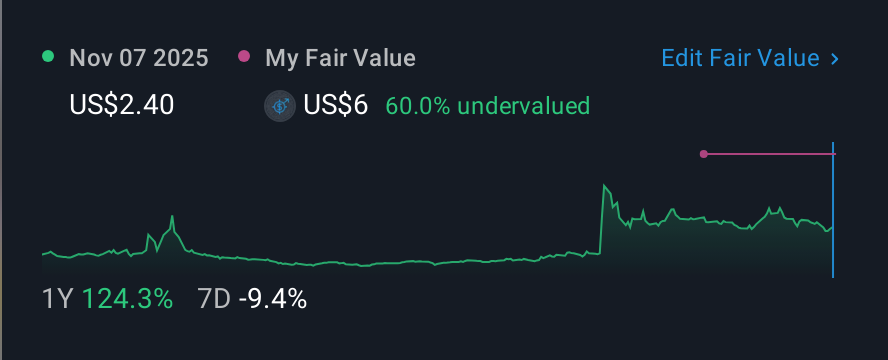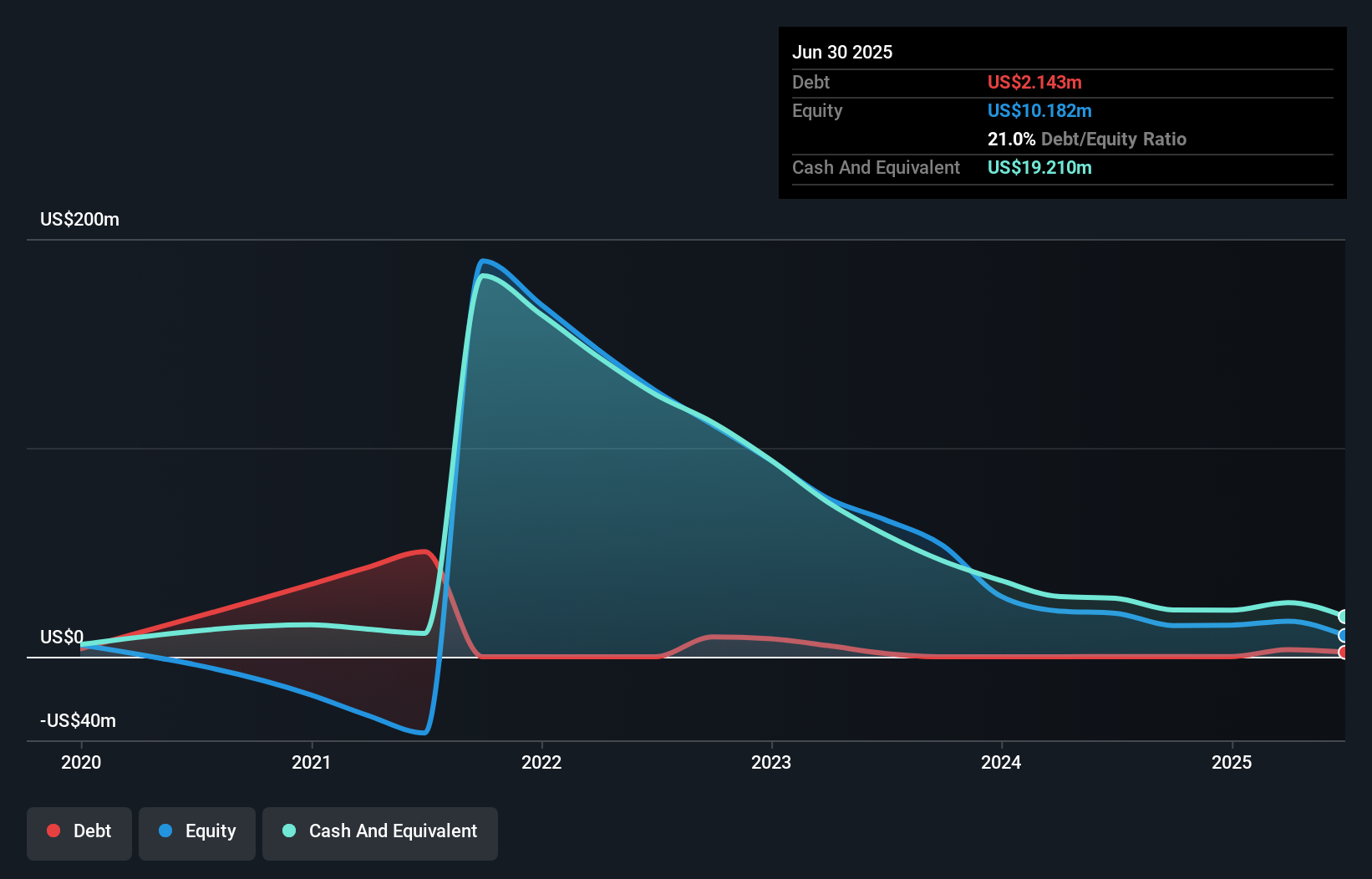- United States
- /
- Electronic Equipment and Components
- /
- NasdaqCM:LIDR
Is AEye (NASDAQ:LIDR) Using Too Much Debt?

Legendary fund manager Li Lu (who Charlie Munger backed) once said, 'The biggest investment risk is not the volatility of prices, but whether you will suffer a permanent loss of capital.' So it might be obvious that you need to consider debt, when you think about how risky any given stock is, because too much debt can sink a company. As with many other companies AEye, Inc. (NASDAQ:LIDR) makes use of debt. But the real question is whether this debt is making the company risky.
When Is Debt Dangerous?
Debt is a tool to help businesses grow, but if a business is incapable of paying off its lenders, then it exists at their mercy. Ultimately, if the company can't fulfill its legal obligations to repay debt, shareholders could walk away with nothing. However, a more usual (but still expensive) situation is where a company must dilute shareholders at a cheap share price simply to get debt under control. Of course, plenty of companies use debt to fund growth, without any negative consequences. When we think about a company's use of debt, we first look at cash and debt together.
How Much Debt Does AEye Carry?
You can click the graphic below for the historical numbers, but it shows that as of June 2025 AEye had US$2.14m of debt, an increase on US$146.0k, over one year. However, its balance sheet shows it holds US$19.2m in cash, so it actually has US$17.1m net cash.

How Healthy Is AEye's Balance Sheet?
We can see from the most recent balance sheet that AEye had liabilities of US$10.6m falling due within a year, and liabilities of US$1.33m due beyond that. On the other hand, it had cash of US$19.2m and US$27.0k worth of receivables due within a year. So it can boast US$7.32m more liquid assets than total liabilities.
This short term liquidity is a sign that AEye could probably pay off its debt with ease, as its balance sheet is far from stretched. Succinctly put, AEye boasts net cash, so it's fair to say it does not have a heavy debt load! The balance sheet is clearly the area to focus on when you are analysing debt. But it is AEye's earnings that will influence how the balance sheet holds up in the future. So if you're keen to discover more about its earnings, it might be worth checking out this graph of its long term earnings trend.
See our latest analysis for AEye
Given it has no significant operating revenue at the moment, shareholders will be hoping AEye can make progress and gain better traction for the business, before it runs low on cash.
So How Risky Is AEye?
Statistically speaking companies that lose money are riskier than those that make money. And the fact is that over the last twelve months AEye lost money at the earnings before interest and tax (EBIT) line. Indeed, in that time it burnt through US$27m of cash and made a loss of US$35m. Given it only has net cash of US$17.1m, the company may need to raise more capital if it doesn't reach break-even soon. Even though its balance sheet seems sufficiently liquid, debt always makes us a little nervous if a company doesn't produce free cash flow regularly. There's no doubt that we learn most about debt from the balance sheet. But ultimately, every company can contain risks that exist outside of the balance sheet. For example, we've discovered 5 warning signs for AEye that you should be aware of before investing here.
When all is said and done, sometimes its easier to focus on companies that don't even need debt. Readers can access a list of growth stocks with zero net debt 100% free, right now.
New: Manage All Your Stock Portfolios in One Place
We've created the ultimate portfolio companion for stock investors, and it's free.
• Connect an unlimited number of Portfolios and see your total in one currency
• Be alerted to new Warning Signs or Risks via email or mobile
• Track the Fair Value of your stocks
Have feedback on this article? Concerned about the content? Get in touch with us directly. Alternatively, email editorial-team (at) simplywallst.com.
This article by Simply Wall St is general in nature. We provide commentary based on historical data and analyst forecasts only using an unbiased methodology and our articles are not intended to be financial advice. It does not constitute a recommendation to buy or sell any stock, and does not take account of your objectives, or your financial situation. We aim to bring you long-term focused analysis driven by fundamental data. Note that our analysis may not factor in the latest price-sensitive company announcements or qualitative material. Simply Wall St has no position in any stocks mentioned.
About NasdaqCM:LIDR
AEye
Provides lidar systems for vehicle autonomy, advanced driver-assistance systems, and robotic vision applications in the United States, Europe, and the Asia Pacific.
Medium-low risk with adequate balance sheet.
Similar Companies
Market Insights
Community Narratives



